Buying process in Spain
Introduction
The Spanish property market is since the crash in 2007 on a recovery phase. The demand for properties in Spain keeps raising, mainly due to foreigners that want to buy a second home in Spain. The banks are also now willing to give loans and mortgages again and the Euribor is today (october 30) – 0,184%. Of course, this does not mean that the interest rate given to you will be negative but it will still be reasonable. Normally the banks add +1,5 or +2 if you are a non resident. Some banks are cheaper and some are more expensive and normally you will have to pay for a life insurance and to have the insurance of the house with the bank. The interest rate normally goes down the more products you contract with the bank.
Bankinter estimates that prices will go up approximately a 5% this year. We have already started to see that the prices are slowly going up in areas like Alicante, Malaga, Madrid and Valencia. Prices were also going up in Cataluña but due to the ongoing crisis this is changing.
The buying process in Spain
The process of buying a property in Spain is quite different from buying a property in Sweden and if you are not careful you can run into certain problems and difficulties.
In order to buy any kind of property you need a Spanish Identification number which is called NIE-Numer in Spanish. You can either apply for this at the Spanish Embassy in your home country or at certain Police Stations where they have a department for foreigners.
Once you have found the property that you would like to buy it is very important that you contact a good solicitor that can guide you through the entire process before you sign any documents. I have unfortunately heard stories where people bought and after ran into problems in one way or another. So it is always better to be on the safe side.
The solicitor will make sure that your rights and interests are protected. The first thing that he will do is to make sure that the seller is the legal owner by ordering a certificate from the land register. This in Spanish is called a “Nota Simple”. It is important to order this certificate before signing any papers because the information we find is very useful and important. We will not only see who is the legal owner but we will also see if there are any mortgages on the property, seizures from any financial institutes etc. There is also a full description of the property, size, how many bedrooms and it is important to compare this to the Public Deed from when the sellers bought the house. You can see here if there is any seizure or freezing of the house due to previous debts. On the day of Notary, the Notarius Publicus will also order this certificate in order to see that there is no “last minute” seizure on the property that you wish to buy.
In the Cadastro, there is also useful information about the house. Unfortunately the Land Register and Catastro are at this point not coordinated in Spain and many times we see that the information does not coincide. Many times the owner might have done reforms that have not been inscribed properly. It is important that the buyer “buys what really exists”. It is the seller´s duty to pay and make sure everything is correctly inscribed in the land register. If there is not time to arrange this before the purchase of the house, it is possible to do it at the same time as you buy your property. You then sign something called “ampliación de obra” (extension of construction) at the Notary and this should always be payed by the seller.
If you buy a house next to the sea line there is a big possibility that this house is affected by the coastal Law. This must be informed to the buyer. There are different kind of affections and I will not enter too deep but it is important to know that in worst case the house could have an order to be demolished. You can also sometimes not rebuild a house that is affected by this law but it depends on the type of affection. Your lawyer will tell you the grade of affection if you are buying a house next to the sea line.
If you find a really cheap apartment in an area that is normally more expensive it could be a so called “tourist apartment”, or apartamento turístico in Spanish. These apartments were constructed on a land that was planned for hotels. Most times these apartments are advertised as normal apartments. You are not supposed to live in these apartments and the purpose is short term rental, just like an hotel. If you use it for proper use, you can receive big fines. The client must of course be informed of this and then decide whether he/she wants to buy or not. The chances that there will be a control are minimum but the law says that you can only rent these properties out and not live there yourself.
It is also important to check with electric and water companies that there are not debts. If you buy a property which has a community fee, the seller will present a written certificate that there are no debts on the day of signature.
If there are any mortgages on the property the bank must provide a certificate of the exact amount to be cancelled. The mortgage is then cancelled on the same day as you take over the property and a bank check will be given to the bank.
The Spanish tax authorities do estimate a minimum value of the house. It is very important to calculate this minimum value because if the selling price is below this value you might be asked to pay tax on the difference. If you have questions regarding this your are very welcome to contact me.
TIPS IF YOU ARE THINKING OF BUYING RURAL LAND
1. Is the Property Registered under the seller´s Name?
This might not be the case if the registered owner has passed away recently and the inheritance tax liability has not been sorted out yet. Until the Spanish inheritance tax is not settled the property cannot be registered in the land register, mortgaged or sold by his beneficiaries. It is therefor very important to ask for a Nota Simple. (In all cases this certificate should be applied for)
If the inland property has been passed several times from one generation to the next without anyone a updating the change of ownership at the Land Registry, it cannot be sold. There are some legal ways to overcome this ; such as an ‘Acta de Notoriedad’ or else following an ‘Expediente de Dominio’.
2. Check the public deed. Does the public deed exist?
You must check if there is a public deed but don´t be surprised if it doesn´t. If there is no public deed we recommend you not to buy the property. It can be solved, of course, but the process is long.
If a public deed exists it might be outdated and inaccurate. You should never buy a rustic land until the seller has updated all missing details and the land register. The seller should pay for all these expenses. The seller might have built a swimming pool or an other room that is not registered. Even though these extras have been built, they do not exist legally and the buyer should not have to pay for something that does not exist “legally”.
3. Are There Charges, liens, debts or liens against the property?
If there are debts, they go automatically against the property and not against the owner. You must be aware that if there are any debts or charges, these become the responsibility of the new owner. It is therefor very important that you hire a conveyancer that ensures that the Public deed is passed over free and clear of charges, encumbrances and debts. The lawyer will inform you what you can do and cannot do in case you decide to buy a rural property.
4. Check the information of the the property at the Land register and “catastro”.
• Plot size: It happens often that the size differ from what is reflected at the Land Registry and ‘Catastro’. Why can it be a discrepancy in the two registers? One explanation can be because the land has been extended or reduced due to for example an inheritance procedure. These changes might have been done off record.
• Inaccurate property description: Reforms might have taken place illegally and not reported. The seller should make sure that any reform or change, should appear in both the land register and Catastro.
• Boundaries: The seller should correct and update if there is any discrepancy of the boundaries between the land register and catastro.
5.- Minimun size of the plot.
Rural plots must have a minimum size in order to be able to build on them. Usually the minimun size is 10.000 square meter, but in some Town Halls it can be less or more.
If you are buying a rural property it is extremely important to apply for a certificate to the Town planning department that certifies that the house is legally built and that is according to the town planning law. It is important to ask for this certificate even though the land is not rustic.
Many houses built on rural plots are “out of the plan”, (fuera de ordenacion in Spanish). This means that the house was built not following the rules but the infraction has prescribed because the Town Hall did not react on time. This kind of properties have some limitations, for example you will have troubles if you want to make a reform and only small reforms like painting etc will be accepted. You might not even be able to build a swimming pool.
To finish
When everything is checked it is time to sign the private contract. In the contract everything that will appear in the pubic deed must be written ( The price, details of property etc) Once this is payed 10% is normally transferred to the seller. If the seller is non resident and has no account in Spain, the money should never be transferred abroad. Then I recommend it is sent to the Notarius account or to the client account of your lawyer.
What else do you need to pay?
It depends in which area you buy but in the Valencia region you pay 10% in tax over the price if it is not a new built house. This tax is called (Impuestos Transmisiones Patriomoniales) in Spanish (Transmission tax).
If the property is brand new you pay 10% in VAT of the sales price + 1,5% of the price without VAT (Stamp duty tax) Actos jurídicos documentados.
If you sell your property in Spain and you are non resident, 3% will be hold in from the price and payed directly by the buyer (normally the solicitor does this) to the Spanish Tax Authorites. If this is not done it can affect the property.
The seller has to pay tax when selling the property which is called Plusvalia. The exact price is set by the City Hall where you live and it depends on the cadastral value of the plot
Other fees that you will have are notary fees that are around 800 and inscription in land register approximately 400 euros but it can vary some depending on price of the property. Solicitor fee from approximately 1500 + VAT.
The year after you buy a property you must declare non residence tax in Spain before the 31st of December of each year. To calculate how much you should pay , you calculate 2% on the assessed value of the property . This value you find on payment for the property tax that you pay in September of evert year. If a property whose value has changed from January 1994, 1,1% is used instead. You pay 19% tax of that sum.
This is just a short resumé of what you should think of before buying a property in Spain. You are welcome to contact me if you are interested to buy any property in Spain or if you have questions.
Article written by:
Caroline Bjälstam
Calle Mozart 9
03581 Alfaz del Pi (Alicante)
Tel: +34618069690/+34966868492
email: info@villasalsol.com
www.villasalsol.com
Omtalte eiendommer
-
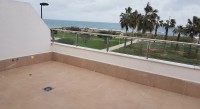 Semi-detached house in Gandia next to oceanGandia (Valencia)€280,000
Semi-detached house in Gandia next to oceanGandia (Valencia)€280,000 -
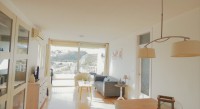 Vakker leilighet i Paradis, VillajoyosaVillajoyosa (Alicante)€165,000
Vakker leilighet i Paradis, VillajoyosaVillajoyosa (Alicante)€165,000 -
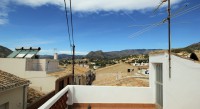 Beautiful little townhouse in Finestrat, Costa BlancaFinestrat (Alicante)€69,000
Beautiful little townhouse in Finestrat, Costa BlancaFinestrat (Alicante)€69,000 -
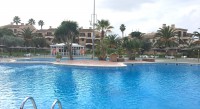 Andelsleilighet på Albir Garden, AlbirAlbir (Alicante)€6,000
Andelsleilighet på Albir Garden, AlbirAlbir (Alicante)€6,000 -
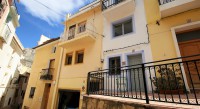 Beautiful townhouse in Finestrat, Costa BlancaFinestrat (Alicante)€110,000
Beautiful townhouse in Finestrat, Costa BlancaFinestrat (Alicante)€110,000






0 kommentar